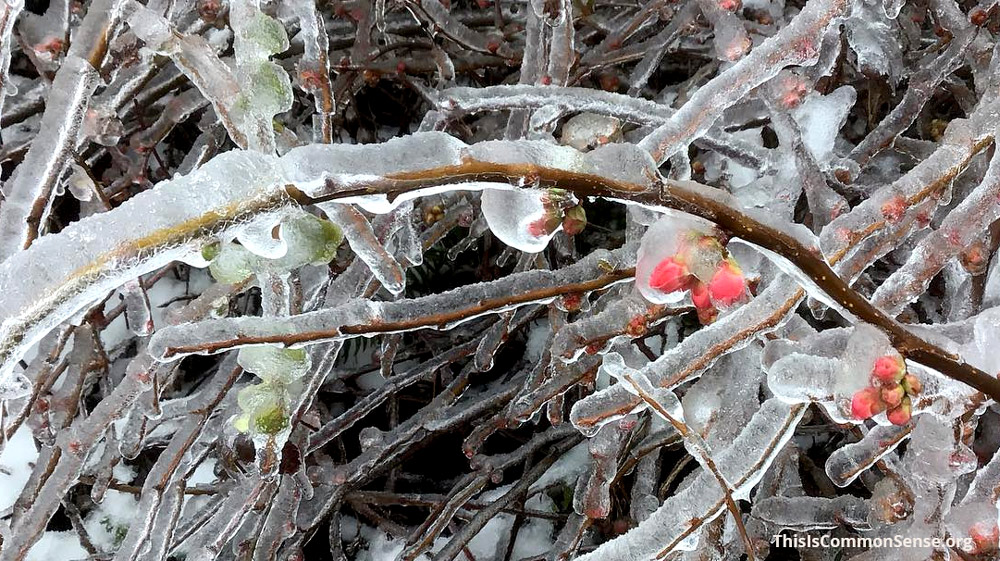When I was young, some folks worried about a return to Ice Age conditions. The climate alarm, in the decades since, prophesies hotter conditions, not colder.
So, with this cold snap hitting North America — ice storms from Washington State to Texas and now heading east by northeast — climate change has emerged in the back (or even front) of our minds.
It’s just not necessarily Fire we fret about. It’s Ice. (Cue recitation of the great Robert Frost poem, now.)
“The arctic air that poured into Texas resulted in a record-breaking demand for power that caused the state’s electric grid to fail,” the Weather Channel reports. “Suppliers had planned to use rolling blackouts, but the system was overwhelmed” — effecting an “estimated 75% of Texas power generation capacity.”
Millions in Mexico are also without power, because natural gas pipelines from Texas froze.
The main hit to the electric grid sure looks like it has been directly* to the distribution — if what I glean from Georgetown’s electric outage page is a good indication.
But that town went heavy into alternative forms of energy production (as has the whole of the state, along with many others). Did that investment help them when the cold came? Former Secretary of Energy Dan Brouillette says the problem is that alternative energy sources are not “base load electricity” but “intermittant and sometimes unreliable.”
Just as batteries under-perform in the cold, windmills don’t turn well when covered in ice. When we really need power, energy production that flakes out is not an energy alternative at all — it’s non-energy.
And if an Ice Age does come back, we’ll need more energy, not less than were global warming to remain the trend.
This is Common Sense. I’m Paul Jacob.
* The reason there was no weekend podcast from me is that my partner in podcasting was without power simply because an ice storm brought down trees on multiple power lines in his area.
—
See all recent commentary
(simplified and organized)
